Modern Siem Reap Cambodia: The Ghosts of Angkor
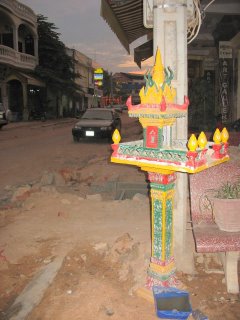
Unless you know a bit about the history of this ravaged land, it is impossible to understand why the streets are torn up, the sidewalks impassable dirt mounds,

why children walk around in rags begging,
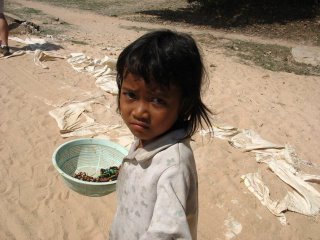
and why women practically engage in fistfights in a competition for your desperately-needed tourist dollars as they hope to sell you a scarf or postcard.

If you have studied southeast Asian history or even watched The Killing Fields, you will remember that on April 17th 1975 the Khmer Rouge, an army of peasants from mostly rural areas of Cambodia (under the direction of Pol Pot, a local boy who gained his communist education in Paris), stormed into the capital, Phnom Penh, and proceeded to kill those loyal to the royal family or the United States, and those with any education, including doctors, teachers, journalists, civil servants, scientists, and even those wearing glasses, as it was believed that they were part of the educated Âelite. The only hope of staying alive during that chaotic time was to claim you were a cab driver, and suddenly overnight thousands of Cambodians were claiming they were cab drivers. When the Khmer Rouge entered Phnom Penh there were about two million people in the citunbelievablybly they left behind only 12.
Those not left behind or killed included children, the old and the sick, who were marched into the countryside to work 12-15 hour days in the fields. The Khmer RougeÂs goal was to create an agrarian utopia, where there would be no rich or poor and all of Cambodia would be living off the land. It was one of the most brutal political experiments in the history of the world, which left 2 million dead out of a pre-civil war population of 7 million. For three years, eight months and 21 days the Khmer Rouge destroyed everything the Cambodians held dear, their families (replaced by Angkar, or Âthe organizationÂ), their land, and their religion. Even the Vietnamese invasion in 1979 to stop the Khmer Rouge didnÂt bring peace to Cambodia. Khmerguerrillaserillas, under the continual leadership of Pol Pot and his successors, disrupted life here as recently as 1998.
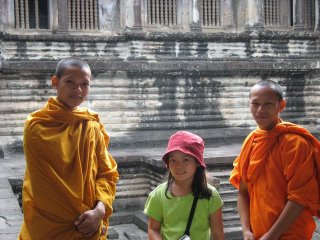
So whatÂs left in Siem Reap are signs of a developing country, struggling to rebuild. Easier said than done even if you have an educated or at least experienced work force who understand road building, construction, health care and agriculture, which the Cambodians donÂt. There has been some rebuilding here, and the luxury hotels have managed to create an oasis of calm outside of the city, but for the rest, it is like no place we have ever seen.

Just a couple interesting things about Cambodia that we didnÂt realize before coming here. This is the only country we have visited that uses the US dollar more than its own local currency, the reil. The reil seems so greatly devalued that you canÂt buy much with it. WeÂve gotten some as change when we use our dollars (they have no US coins) but find we canÂt buy anything with them because the prices are so high.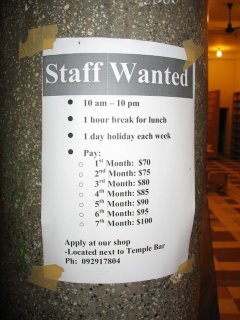
I havenÂt seen a working ATM either. This is one of the most heavily landmined countries in the world, and itÂs all too common to see people walking (limping?) around who are missing limbs.
Another thing is that our hotel, a fairly simple clean guesthouse, is run by a bunch of teenage boys. Actually, they may be older but, the point is, they look like teenagers, and there is no one working here that looks like a 40-60 year adult. Come to think of it, we havenÂt seen too many around here. Everyone looks like they are under 30 or over 70, it seems an entire generation has been lost.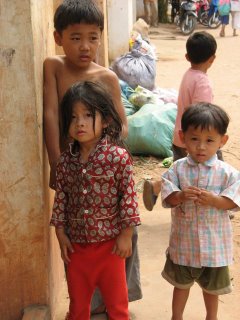
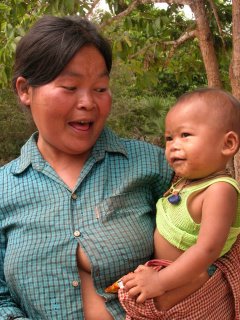
I hope that the tourist dollars can help Cambodians to become self sufficient in their own country, but IÂm dubious that will soon happen. We spent US$80 for 2 three-day passes to visit Angkor, which is managed by Sokimex Petroleum Company, which takes the majority of the money. The luxury hotels (which frankly we would have rather stayed at) are owned by foreign countries and a couple of the construction projects weÂve seen have had signs that Korean, Japanese, or European ccontrollingave the controllng stake.
In a previous post I alluded to the killing fields, which were what the areasPenhside of Phnom Phen specifically, and more generally the entire country, was known as. While Andy and I expected to see some pretty incredible sights on this trip, and knew we would come across people far poorer than any you would find in the United States, I think we were unprepared for what modern-day Cambodia offers. We canÂt walk around and constantly think of what weÂve seen in Cambodia and not go crazy, but we will be haunted by this sad, beautiful country for a long time to come.

0 Comments:
Post a Comment
<< Home